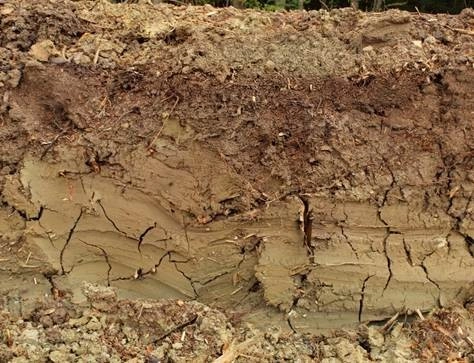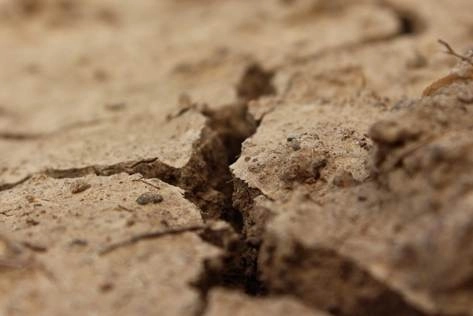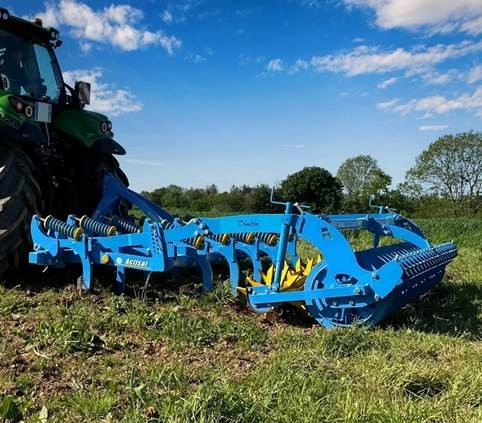How to decompact clay soil ?
Compacted soil never bodes well for a farmer. When the soil is predominantly clay, the complications add up. Soil compaction is akin to structural damage, which considerably reduces porosity. Air exchange and water circulation are greatly reduced, or even blocked.
This has a number of adverse effects on crop development and productivity. In this article, we look at the solutions available for decompacting your clay soil while respecting its structure.
The specific characteristics of clay soil
All soils contain varying amounts of clay. A soil is considered clayey when it contains more than 25%. This type of soil has a very fine granulometry (particles of less than 0.002mm) with a high water retention capacity. Depending on the percentage of clay in the soil, this retention capacity can make it difficult for existing crops to capture water, as it diffuses slowly.
Conversely, during droughts, the clays shrink considerably, forming large open cracks in the soil surface. In this case, the soil surface becomes very difficult to work. This crust also causes problems during heavy rainfall, as water runs off the surface and has difficulty penetrating the soil.
Alkaline, clay soil does not fully release the nutrients and water essential for crops. What’s more, it heats up and dries out slowly, making it difficult to work the plots when it comes to the windows available for cracking or sowing.
Clay soil can, however, support a good number of successful crops, if it is worked well and organic and mineral matter is added correctly.
Why decompact clay soil ?
In addition to the fact that compacted clay soil no longer allows exchanges, it also prevents the development of healthy, productive crops. The root system of these crops cannot develop properly in soil that is too dense. The fact that water can no longer infiltrate and is trapped can also lead to disease or root asphyxia due to a lack of porosity.
Compaction also has an environmental impact. In soil that is too compact, mineral elements can no longer circulate. These can then turn into gases and escape into the air, causing greenhouse gases or leading to soil acidification.
Decompacting plots of land restores structure and life to clay soil. Soil that functions correctly and vertically will produce crops with improved yields.

Techniques for decompacting clay soil
Correcting the structure of clay soil is feasible, but it is important to carry out a thorough diagnosis beforehand to establish where any settling is taking place. Crop profile, spade test, etc… analysing your soil to adapt your work is essential. Intercropping before the winter period is the ideal time to do this.
We strongly advise against mechanically working a clay soil that is too wet, as this can lead to smoothing and new footing. Well-drained soil is ideal. When the soil is compacted, the important thing is to use equipment that will not upset the horizons, and to ensure that the soil is properly re-supported after tilling, in order to conserve the moisture present for the next crop.
Working to a depth of at least 5cm more than the area of compaction observed will ensure effective working. If the compaction is too deep (more than 30cm), plant cover is recommended for natural regeneration.
The addition of organic matter can also lighten clay soil, as can calcium, which is essential for achieving a flocculent structure that prevents the clays from binding too much. Find out more about this in our article: How to amend clay soil ?
Finally, upstream, limiting the number of times machinery is used gives a better chance of having less compacted soil.
Our tools for loosening clay soil
Actisol has a wide range of multi-purpose cracking, scalping and decompacting equipment. Our fine teeth work vertically without disturbing the soil horizons, penetrating the soil even in difficult conditions. Thanks to its non-stop double spring system, the Actisol teeth vibrates and creates a shockwave around itself, accentuating the cracking effect.
The range of teeth tools has been developed for every tractor power. The support rollers have been designed to suit all types of soil. For clay soils and depending on the clay content, several support rollers can be used. The flexible blades of the flexsol roller provide lighter support than a texsol roller (which has a T-shaped edge). Our field technicians will select the type of roller best suited to your needs.
Range of Actisol teeth tools:
Designation | Beam | Frame | Teeth | Working width | Interest |
|---|---|---|---|---|---|
DEMETER | Double or Triple | Fixed | 5 to 11 | 2.50 to 4.20m | Equips all tractor power ratings. |
|---|---|---|---|---|---|
CYBELLE | Double | Hydraulic folding | 11 to 15 | 4.00 to 5.00m | Site throughput and road gauges. |
|---|---|---|---|---|---|
ACTIMIXT | Monopoutre | Fixed or Hydraulic folding | 4 to 12 | 3.00 to 6.00m | Combined work for a single pass. |
|---|---|---|---|---|---|
SPASS VRH | Double | Hydraulic folding | 8 to 12 | 4.00 to 6.00m | For large farms. Combined work for a single pass. |
|---|---|---|---|---|---|
SPARTEA | Triple | Hydraulic folding | 11 to 17 | 4.00 to 6.00m | For large farms. |
|---|---|---|---|---|---|
Our approach: soil cracking
At Actisol, cracking is our core business. We offer equipment tailored to the specific needs of each user. Compacted soils cannot withstand the passage of our unique teeth, and we work alongside you to enhance the structure of your soils.




